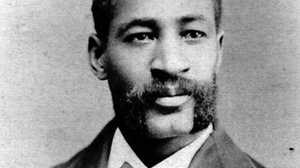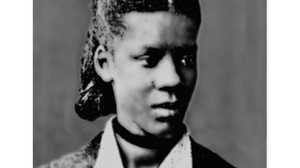Fisk University

Established in January 1866 to educate newly freed slaves of all ages, Fisk University -- originally known as the Fisk Free Colored School -- would eventually become a premiere liberal arts institution. The school owes it origins to both the hunger of ex-slaves for formal education and the missionary zeal of a group of Northern whites raised in abolitionist families who dedicated themselves to the education of African Americans. At a time when recently freed blacks were establishing makeshift schools all over the South (making do with abandoned buildings and untrained teachers) the opening of Fisk in Nashville was greeted with tremendous excitement. Within the first four months of the school's existence, Fisk enrolled nine hundred students.
The inability of Fisk’s sponsor -- the American Missionary Association (AMA) -- to purchase the site of the new school was the first indication of the difficult financial road that lay ahead. It was only with the contributions and legwork of a few AMA and Freedmen's Bureau officials -- including Bureau Commissioner General Clinton B. Fisk -- that the school was able to open. The school's choir director and treasurer George L. White was charged with collecting tuition in order to keep the new school afloat. He immediately set up fundraising performances in Nashville and surrounding towns. But Fisk’s choir garnered little sympathy from local whites, whose hostility toward a black school in their midst manifested itself with frequent acts of physical violence toward its students and teachers.
To Fisk’s founders, religion and education went hand in hand. Bible study and daily prayer services were therefore part of the school’s regimen. The original teachers were themselves missionaries and sacrificed a great deal of material comfort to work at Fisk, where facilities were primitive, curricular materials were few, and even food was scarce. In addition to teaching, many of them participated in relief and missionary work in and around Nashville. The school’s strict enforcement of its rules — students Thomas Rutling and Isaac Dickerson, a Jubilee Singers-to-be, was nearly expelled for passing notes to a female student -- helped to maintain its morally upright and Protestant character. In addition to their talent, the evangelical nature of Fisk’s Jubilee Singers -- their repertoire consisted almost of exclusively religious music -- made them so popular among middle and upper class audiences that they raised $50,000 for the school in the early 1870s.
After initially providing elementary education for its students, Fisk began functioning as a normal school -- a school that prepared its students for teaching.. The success of this program would come into evidence over the next several decades, as Fisk alumni became known throughout the South for starting their own schools and becoming community leaders. By 1869 the Normal Department had added a model school in which students taught for a half hour each day. Fisk also had a high school, a theology department, a commercial department for vocational training, and a college. Although a number of black colleges would add vocational courses to their curriculum in the late 1890s and early 1900s in order to gain standing with white philanthropists, Fisk remained primarily dedicated to the liberal arts. W. E. B. DuBois, who would become known for promoting the intellectual (vs. vocational) development of African Americans, graduated from Fisk in 1888.
The school’s third president, Reverend James G. Merrill, resigned in 1908 out of frustration with the school’s continuing struggle to make ends meet and his own lack of talent as a fundraiser. Ironically, it was the 1909 election of Booker T. Washington -- a longtime proponent of vocational education for blacks -- to Fisk’s board of trustees that ensured the school’s survival during the early decades of the twentieth century. Washington’s wife, a tireless advocate of racial uplift, had graduated from Fisk and was so well liked by Andrew Carnegie that he donated a library to the school. Fisk’s new president, George A. Gates, was an experienced administrator and expanded the school’s curriculum during this time. He also worked with other black colleges to establish uniform admission requirements and to raise standards. With the help of sociologist and Fisk graduate George Edmund Haynes, a training center for social workers was created at Fisk in 1910, and the school became known for sociology. By 1920, the school had an endowment of one million dollars.
Although many African Americans felt as early as 1910 that Fisk had become overly concessionary to white interests, the school did not have a black president until Charles Spurgeon Johnson took the post in 1946. Chair of Fisk’s sociology department since 1928 and author of the well-known study, "The Negro in Chicago" (1922), Johnson established the Race Relations Institute in 1945, which has since influenced the federal government’s policy toward segregation in the military, the labor market, and schools. A number of other well-known black scholars and artists have since served on Fisk’s faculty, including the painter Aaron Douglas and literary figures such as Arna Bontemps and James Weldon Johnson. Fisk students were active in the Civil Rights movement of the 1950s and '60s. The university’s graduates include the renowned historian John Hope Franklin, the poet and playwright Nikki Giovanni, and the dancer and choreographer Judith Jamison.







